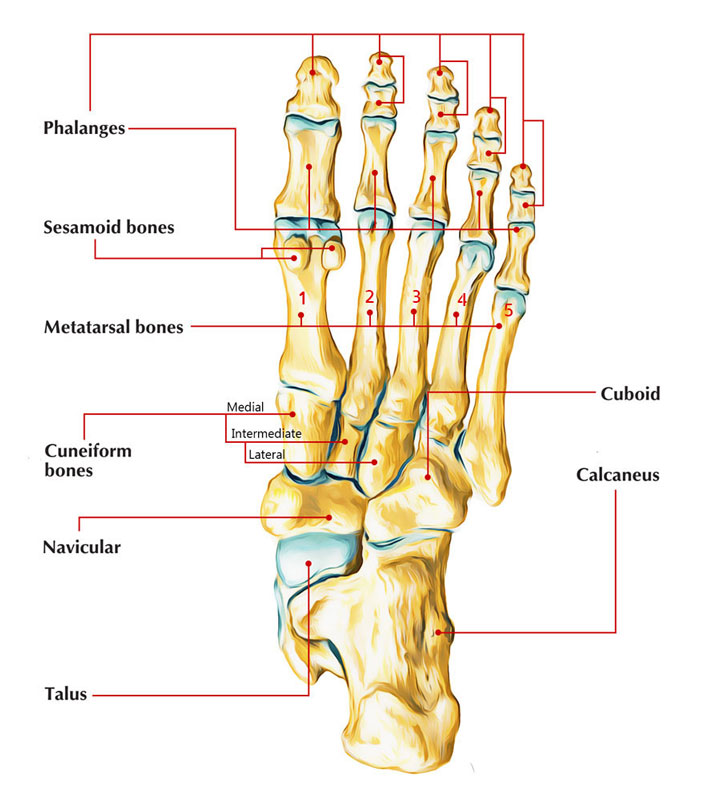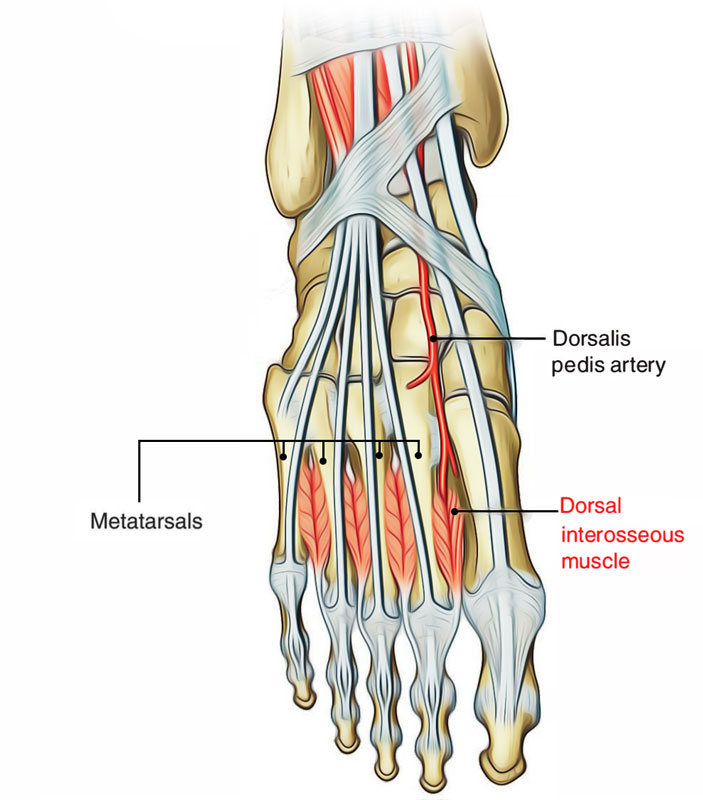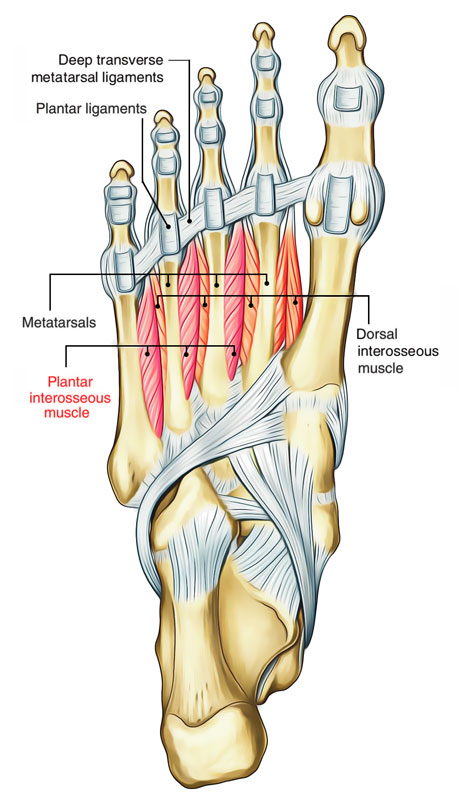The fourth metatarsal bone has almost the very same structure as the third, though it is a little smaller than third. Its body, which is prismatic and also triangular, is curved inwards rather more extremely compared to that of the preceding bone.

Fourth Metatarsal
Surfaces
- Its upper surface is narrow and divided into two parts by a protuberant line. It provides connection to the third and also fourth dorsal interosseous muscles.

Fourth Metatarsal Surface
- Its outer surface is narrow and rounded; the inner surface has the very same nature. The previous offers connection to the fourth dorsal interosseous muscle, the latter to the second plantar interosseous muscle, along with the inferior edge, which is thin, concave, and is directed outwards a little.

Fourth Metatarsal Surface
Structure
The posterior or tarsal extremity of the fourth metatarsal bone is cubical type.
- It has posteriorly square surface, rather concave, which is connected with the os cuboides.
- Internal surface has two other sides:
- Anterior surface is convex, and integrates with the third metatarsal bone.
- Posterior surface is extremely narrow, attaches the third cuneiform bone.
- Externally it has a rather concave side, which integrates with the fifth metatarsal bone.
- Superiorly along with inferiorly it has two unequal surfaces that give connection to ligaments.
The anterior or phalangeal extremity is similar other metatarsal bones. It is integrated with the first phalanx of the fourth toe.
Clinical Significance
- The four lesser metatarsals offer only one connection point on each of the plantar weight-bearing side.
- Substantial ligamentous structures connect each of the bones to their surrounding next-door neighbors.
Injuries
- Indirect twisting systems might lead to a spiral pattern. One should watch out for Lisfranc injury with participation of base of second metatarsal.
- A lot of separated specific central metatarsal fractures can be dealt with closed with hard-soled shoes and as dynamic weight bearing.
Fractures
- Fractures of the central metatarsals are far more frequent compared to separated first metatarsal fractures.
- Central metatarsal fractures can be different injuries or part of a more severe injury pattern.
- The surgical necessity is usually pointed out in any fracture displaying more than 10 degrees of difference in the dorsal plantar plane or 3 to 4 mm conversion in any plane.
- Problems of dealing with central metatarsal fractures originate when there is inadequate medication of plantar part.
x

 (50 votes, average: 4.55 out of 5)
(50 votes, average: 4.55 out of 5)